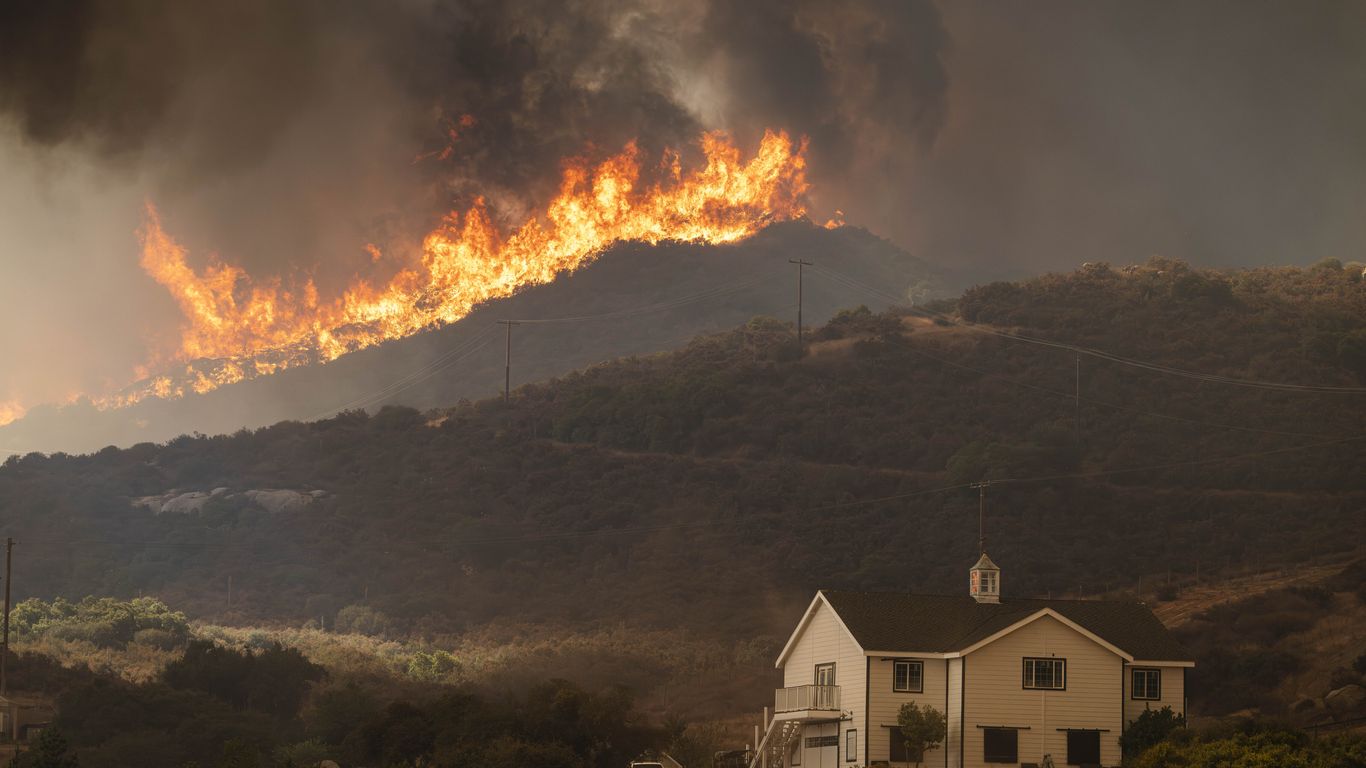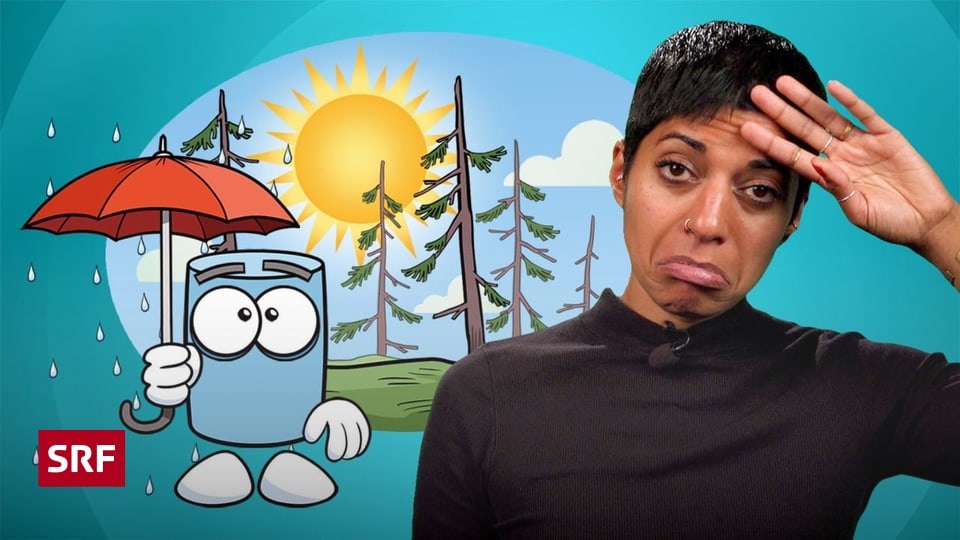Report: Dangerous Climate Whiplash Poses Significant Threat To Urban Populations

Table of Contents
Understanding Climate Whiplash and its Urban Impacts
Defining Climate Whiplash
Climate whiplash refers to the rapid and unpredictable transitions between periods of extreme weather. Unlike gradual climate change, climate whiplash involves sudden and intense shifts, making it exceptionally challenging to predict and prepare for. The causes are complex, but climate change is a significant exacerbating factor. Warmer global temperatures are fueling more intense weather systems, leading to more frequent and severe extreme events. The unpredictability stems from the chaotic nature of weather patterns, which are becoming increasingly volatile due to anthropogenic climate change.
- Increased frequency of extreme weather events: More frequent heatwaves, droughts, floods, and storms are characteristic of climate whiplash.
- Shorter recovery periods between events: Cities rarely have time to fully recover from one extreme event before facing another, compounding the damage and strain on resources.
- Cascading effects of multiple events: A drought followed by a flood, or a heatwave leading to wildfires, illustrates the cascading impacts, creating far-reaching and devastating consequences.
- Difficulty in predicting and preparing for these rapid shifts: The unpredictable nature of climate whiplash makes traditional disaster preparedness strategies less effective.
The Vulnerability of Urban Areas
Cities are particularly susceptible to climate whiplash due to a number of factors. Their high population densities concentrate vulnerability, and existing infrastructure often struggles to cope with the intensity and frequency of these events.
- High population density: Concentrated populations amplify the impact of extreme weather, leading to greater casualties and displacement.
- Limited green spaces: The lack of green spaces exacerbates the urban heat island effect, increasing the risk and severity of heatwaves.
- Inadequate infrastructure: Aging or insufficient infrastructure, like drainage systems and flood defenses, is often overwhelmed by extreme events.
- Socioeconomic disparities exacerbating vulnerability: Low-income communities often lack the resources to cope with climate whiplash, facing disproportionately higher risks.
- Existing urban heat island effect worsening extreme heat events: Cities already experience higher temperatures than surrounding areas, making heatwaves even more dangerous.
Consequences of Climate Whiplash in Urban Environments
Health Impacts
Climate whiplash poses significant threats to public health, leading to a range of direct and indirect consequences.
- Increased heatstroke and heat-related illnesses: Extreme heat events result in increased hospitalizations and fatalities due to heatstroke and other heat-related illnesses.
- Spread of infectious diseases: Flooding and extreme weather can contaminate water sources and spread waterborne diseases.
- Respiratory problems due to air pollution exacerbated by extreme weather: Wildfires and dust storms worsen air quality, triggering respiratory illnesses.
- Mental health impacts of repeated trauma from extreme events: The repeated exposure to traumatic events can lead to increased rates of anxiety, depression, and PTSD.
Economic Impacts
The financial burden of climate whiplash on cities is substantial and far-reaching.
- Damage to infrastructure (roads, buildings, power grids): Extreme weather events can cause extensive damage to critical infrastructure, requiring costly repairs and replacements.
- Disruption of supply chains: Extreme weather can disrupt transportation networks, leading to shortages of essential goods and services.
- Loss of productivity: Businesses and individuals may experience lost productivity due to disruptions caused by extreme weather.
- Increased insurance costs: The increased frequency and severity of extreme weather events are driving up insurance premiums.
- Displacement and migration: People may be forced to leave their homes due to damage or unlivable conditions, leading to displacement and migration.
Social Impacts
Climate whiplash creates significant social disruption, often exacerbating existing inequalities.
- Increased social inequality: Vulnerable populations are disproportionately affected by the impacts of climate whiplash.
- Displacement and migration of vulnerable populations: Climate whiplash can force people from their homes and communities, leading to displacement and migration.
- Strain on emergency services: Extreme weather events place a huge strain on emergency services, potentially overwhelming their capacity.
- Social unrest due to resource scarcity: Shortages of food, water, and other essential resources can lead to social unrest and conflict.
- Disruption of essential services (water, electricity): Damage to infrastructure can disrupt the provision of essential services.
Mitigation and Adaptation Strategies for Urban Resilience
Investing in Resilient Infrastructure
Building more robust infrastructure is crucial for mitigating the impacts of climate whiplash.
- Improved drainage systems: Enhanced drainage systems can reduce the risk of flooding.
- Flood defenses: Investing in seawalls, levees, and other flood defenses can protect coastal and low-lying areas.
- Heat-resistant building materials: Using heat-resistant materials in construction can reduce the impact of heatwaves.
- Decentralized energy systems: Decentralized energy systems are less vulnerable to widespread outages during extreme weather events.
- Early warning systems for extreme weather events: Improved early warning systems can give people time to prepare and evacuate.
Enhancing Urban Green Spaces
Increasing green areas within cities offers multiple benefits in terms of climate resilience.
- Reduced urban heat island effect: Green spaces help to mitigate the urban heat island effect, reducing temperatures and improving air quality.
- Improved air quality: Plants absorb pollutants, improving air quality and reducing respiratory problems.
- Flood mitigation: Green spaces can absorb rainwater, reducing the risk of flooding.
- Enhanced biodiversity: Green spaces provide habitats for wildlife and promote biodiversity.
- Improved mental wellbeing: Access to green spaces has positive impacts on mental health and wellbeing.
Implementing Effective Emergency Response Plans
Preparedness is key to minimizing the impacts of climate whiplash.
- Community-based early warning systems: Community-based systems can ensure that warnings reach vulnerable populations effectively.
- Evacuation plans: Well-defined evacuation plans are essential to ensure the safe evacuation of people from threatened areas.
- Resource allocation strategies: Strategies for allocating resources during and after extreme events are crucial.
- Improved coordination between emergency services and local communities: Effective coordination between different agencies and communities is essential.
Promoting Climate Change Education and Awareness
Raising public awareness is crucial for fostering collective action.
- Public awareness campaigns: Public campaigns can educate people about the risks of climate whiplash and how to prepare.
- Educational programs in schools and communities: Integrating climate change education into school curricula and community programs is important.
- Citizen science initiatives to monitor local weather patterns: Citizen science initiatives can provide valuable data for improving predictions and preparedness.
Conclusion
This report highlights the severe threat that climate whiplash poses to urban populations worldwide. The unpredictable nature of these extreme weather events, coupled with the vulnerability of urban environments, necessitates urgent action. By investing in resilient infrastructure, enhancing urban green spaces, implementing effective emergency response plans, and promoting climate change education and awareness, we can significantly reduce the risks associated with climate whiplash and build more sustainable and resilient cities. We must act now to protect our urban communities from the escalating dangers of climate whiplash. Further research and proactive urban planning strategies are crucial to mitigating the devastating consequences of climate whiplash in urban areas and creating truly climate-resilient cities.

Featured Posts
-
 Braintree And Witham Times Local Man Convicted On Animal Pornography Charges
May 31, 2025
Braintree And Witham Times Local Man Convicted On Animal Pornography Charges
May 31, 2025 -
 Rosemary And Thyme Essential Oils Benefits And Uses
May 31, 2025
Rosemary And Thyme Essential Oils Benefits And Uses
May 31, 2025 -
 Der Zukuenftige Bodensee Auswirkungen Des Klimawandels In 20 000 Jahren
May 31, 2025
Der Zukuenftige Bodensee Auswirkungen Des Klimawandels In 20 000 Jahren
May 31, 2025 -
 Veterinary Costs Watchdog Explores Price Caps And Comparison Sites
May 31, 2025
Veterinary Costs Watchdog Explores Price Caps And Comparison Sites
May 31, 2025 -
 Elon Musk Tried To Stop Open Ais Uae Deal Report Details White House Response
May 31, 2025
Elon Musk Tried To Stop Open Ais Uae Deal Report Details White House Response
May 31, 2025
